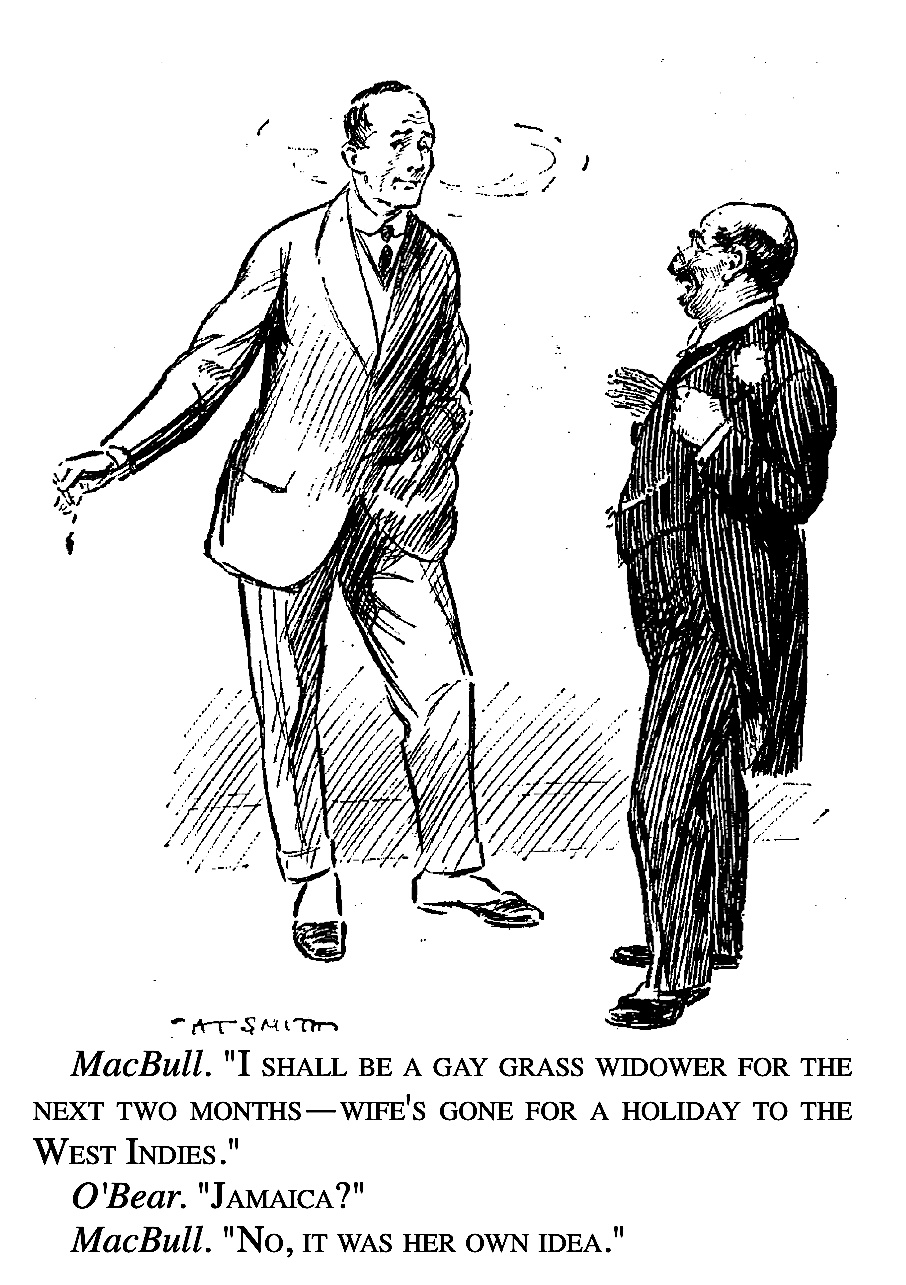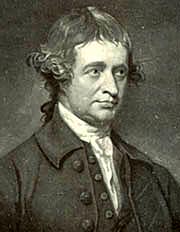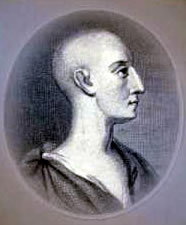|
Bathos
Bathos ( ;''Oxford English Dictionary'', 1st ed. "bathos, ''n.'' Oxford University Press (Oxford), 1885. , "depth") is a literary term, first used in this sense in Alexander Pope's 1727 essay " Peri Bathous", to describe an amusingly failed attempt at presenting artistic greatness. ''Bathos'' has come to refer to rhetorical anticlimax, an abrupt transition from a lofty style or grand topic to a common or vulgar one, occurring either accidentally (through artistic ineptitude) or intentionally (for comic effect). Intentional bathos appears in satirical genres such as burlesque and mock epic. "Bathos" or "bathetic" is also used for similar effects in other branches of the arts, such as musical passages marked '' ridicolosamente''. In film, bathos may appear in a contrast cut intended for comic relief or be produced by an accidental jump cut. Alexander Pope's definition ''The Art of Sinking in Poetry'' As a term for the combination of the very high with the v ... [...More Info...] [...Related Items...] OR: [Wikipedia] [Google] [Baidu] |
Literary Terms
This glossary of literary terms is a list of definitions of terms and concepts used in the discussion, classification, analysis, and criticism of all types of literature, such as poetry, novels, and picture books, as well as of grammar, syntax, and language techniques. For a more complete glossary of terms relating to poetry in particular, see Glossary of poetry terms. A B C D ... [...More Info...] [...Related Items...] OR: [Wikipedia] [Google] [Baidu] |
Pathos
Pathos appeals to the emotions and ideals of the audience and elicits feelings that already reside in them. ''Pathos'' is a term most often used in rhetoric (in which it is considered one of the three modes of persuasion, alongside ethos and logos), as well as in literature, film and other narrative art. Methods Emotional appeal can be accomplished in many ways, such as the following: * by a metaphor or storytelling, commonly known as a hook; * by passion in the delivery of the speech or writing, as determined by the audience; * by personal anecdote. Appealing to an ideal can also be handled in various ways, such as the following: * by understanding the reason for their position * avoiding attacks against a person or audience's personality * use the attributes of the ideal to reinforce the message. Pathos tends to use "loaded" words that will get some sort of reaction. Examples could include "victim", in a number of different contexts. In certain situations, pathos may be ... [...More Info...] [...Related Items...] OR: [Wikipedia] [Google] [Baidu] |
Figures Of Speech
A figure of speech or rhetorical figure is a word or phrase that intentionally deviates from straightforward language use or literal meaning to produce a rhetorical or intensified effect (emotionally, aesthetically, intellectually, etc.). In the distinction between literal and figurative language, figures of speech constitute the latter. Figures of speech are traditionally classified into '' schemes'', which vary the ordinary sequence of words, and '' tropes'', where words carry a meaning other than what they ordinarily signify. An example of a scheme is a polysyndeton: the repetition of a conjunction before every element in a list, whereas the conjunction typically would appear only before the last element, as in "Lions and tigers and bears, oh my!"—emphasizing the danger and number of animals more than the prosaic wording with only the second "and". An example of a trope is the metaphor, describing one thing as something it clearly is not, as a way to illustrate by compar ... [...More Info...] [...Related Items...] OR: [Wikipedia] [Google] [Baidu] |
Trope (literature)
A literary trope is an artistic effect realized with figurative language – word, phrase, image – such as a rhetorical figure. In editorial practice, a ''trope'' is "a substitution of a word or phrase by a less literal word or phrase". Semantic change has expanded the definition of the literary term ''trope'' to also describe a writer's usage of commonly recurring or overused literary techniques and rhetorical devices (characters and situations), motifs, and clichés in a work of creative literature. Origins The term ''trope'' derives from the Greek (), 'a turn, a change', related to the root of the verb (), 'to turn, to direct, to alter, to change'; this means that the term is used metaphorically to denote, among other things, metaphorical language. Tropes and their classification were an important field in classical rhetoric. The study of tropes has been taken up again in modern criticism, especially in deconstruction. Tropological criticism (not to be confused with t ... [...More Info...] [...Related Items...] OR: [Wikipedia] [Google] [Baidu] |
Hierarchy Of Genres
A hierarchy of genres is any formalization which ranks different genres in an art form in terms of their prestige and cultural value. In literature, the Epic poetry, epic was considered the highest form, for the reason expressed by Samuel Johnson in his ''Life of John Milton'': "By the general consent of criticks, the first praise of genius is due to the writer of an epick poem, as it requires an assemblage of all the powers which are singly sufficient for other compositions." Below that came lyric poetry, and comic poetry, with a similar ranking for drama. The novel took a long time to establish a firm place in the hierarchy, doing so only as belief in any systematic hierarchy of forms expired in the 19th century. In music, lyrics, lyrical settings of words were accorded a higher status than merely instrumental works, at least until the Baroque period, and opera retained a superior status for much longer. The status of works also varies with the number of players ... [...More Info...] [...Related Items...] OR: [Wikipedia] [Google] [Baidu] |
Still Life
A still life (: still lifes) is a work of art depicting mostly wikt:inanimate, inanimate subject matter, typically commonplace objects which are either natural (food, flowers, dead animals, plants, rocks, shells, etc.) or artificiality, human-made (drinking glasses, books, vases, jewelry, coins, pipes, etc.). With origins in the Middle Ages and Ancient Greco-Roman art, still-life painting emerged as a distinct genre and professional specialization in Western painting by the late 16th century, and has remained significant since then. One advantage of the still-life artform is that it allows an artist much freedom to experiment with the arrangement of elements within a composition of a painting. Still life, as a particular genre, began with Netherlandish art, Netherlandish painting of the 16th and 17th centuries, and the English term ''still life'' derives from the Dutch word ''stilleven''. Early still-life paintings, particularly before 1700, often contained religious and allego ... [...More Info...] [...Related Items...] OR: [Wikipedia] [Google] [Baidu] |
Genre
Genre () is any style or form of communication in any mode (written, spoken, digital, artistic, etc.) with socially agreed-upon conventions developed over time. In popular usage, it normally describes a category of literature, music, or other forms of art or entertainment, based on some set of stylistic criteria, as in literary genres, film genres, music genres, comics genres, etc. Often, works fit into multiple genres by way of borrowing and recombining these conventions. Stand-alone texts, works, or pieces of communication may have individual styles, but genres are amalgams of these texts based on agreed-upon or socially inferred conventions. Some genres may have rigid, strictly adhered-to guidelines, while others may show great flexibility. The proper use of a specific genre is important for a successful transfer of information ( media-adequacy). Critical discussion of genre perhaps began with a classification system for ancient Greek literature, as set out in Aristotle' ... [...More Info...] [...Related Items...] OR: [Wikipedia] [Google] [Baidu] |
A Philosophical Enquiry Into The Origin Of Our Ideas Of The Sublime And Beautiful
''A Philosophical Enquiry into the Origin of Our Ideas of the Sublime and Beautiful'' is a 1757 treatise (2nd edition 1759) on aesthetics written by the Anglo-Irish politician Edmund Burke. It was the first complete philosophical exposition for separating the beautiful and the sublime into their own respective rational categories. It attracted the attention of prominent thinkers such as Denis Diderot and Immanuel Kant. Summary According to Burke, ''the Beautiful'' is that which is well-formed and aesthetically pleasing, whereas ''the Sublime'' is that which has the power to compel and destroy us. The preference for ''the Sublime'' over ''the Beautiful'' was to mark the transition from the Neoclassical to the Romantic era. The work includes criticism of the idea that beauty is dependent on proportion: "Beauty hath usually been said to consist in certain proportions of parts. On considering the matter, I have great reason to doubt, whether beauty be at all an idea belonging to ... [...More Info...] [...Related Items...] OR: [Wikipedia] [Google] [Baidu] |
Edmund Burke
Edmund Burke (; 12 January [New Style, NS] 1729 – 9 July 1797) was an Anglo-Irish Politician, statesman, journalist, writer, literary critic, philosopher, and parliamentary orator who is regarded as the founder of the Social philosophy, social and Philosophy of culture, cultural philosophy of conservatism.Andrew Heywood, ''Political Ideologies: An Introduction''. Third Edition. (Palgrave Macmillan, 2003), p. 74. Regarded as one of the most influential conservative thinkers and writers, Burke spent most of his political career in Great Britain and was elected as a member of Parliament (MP) from 1766 to 1794 in the House of Commons of Great Britain with the Whig (British political party), Whig Party. His writings and literary publications influenced British conservative thought to a great extent, and helped establish the earliest foundations for modern conservatism and liberal democracy. His writings also played a crucial role in influencing public views and opinions in Britain ... [...More Info...] [...Related Items...] OR: [Wikipedia] [Google] [Baidu] |
Ambrose Philips
Ambrose Philips (167418 June 1749) was an England, English poet and politician. He feuded with other poets of his time, resulting in Henry Carey (writer), Henry Carey bestowing the nickname "Namby-Pamby" upon him, which came to mean affected, weak, and maudlin speech or verse. Life Philips was born in Shropshire of a Leicestershire family. He was educated at Shrewsbury School and St John's College, Cambridge, of which he became a fellow in 1699. He seems to have lived chiefly at Cambridge, England, Cambridge until he resigned his fellowship in 1708, and his pastorals were probably written in this period. He worked for Jacob Tonson the bookseller, and his ''Pastorals'' opened the sixth volume of Tonson's ''Miscellanies'' (1709), which also contained the pastorals of Alexander Pope. Philips was a staunch British Whig Party, Whig, and a friend of Richard Steele and Joseph Addison. In Nos. 22, 23, 30 and 32 (1713) of ''The Guardian (1713), The Guardian'' he was rashly praised as th ... [...More Info...] [...Related Items...] OR: [Wikipedia] [Google] [Baidu] |
John Arbuthnot
John Arbuthnot FRS (''baptised'' 29 April 1667 – 27 February 1735), often known simply as Dr Arbuthnot, was a Scottish physician, satirist and polymath in London. He is best remembered for his contributions to mathematics, his membership in the Scriblerus Club (where he inspired Jonathan Swift's '' Gulliver's Travels'' book III and Alexander Pope's '' Peri Bathous, Or the Art of Sinking in Poetry'', ''Memoirs of Martin Scriblerus,'' and possibly '' The Dunciad''), and for inventing the figure of John Bull. Biography In his mid-life, Arbuthnot, complaining of the work of Edmund Curll, among others, who commissioned and invented a biography as soon as an author died, said, "Biography is one of the new terrors of death," and so a biography of Arbuthnot is made difficult by his own reluctance to leave records. Alexander Pope noted to Joseph Spence that Arbuthnot allowed his infant children to play with, and even burn, his writings. Throughout his professional life, Arbut ... [...More Info...] [...Related Items...] OR: [Wikipedia] [Google] [Baidu] |
John Gay
John Gay (30 June 1685 – 4 December 1732) was an English poet and dramatist and member of the Scriblerus Club. He is best remembered for ''The Beggar's Opera'' (1728), a ballad opera. The characters, including Captain Macheath and Polly Peachum, became household names.. Early life Gay was born in Barnstaple, England, last of five children of William Gay (died 1695) and Katherine (died 1694), daughter of Jonathan Hanmer, "the leading Nonconformist divine of the town"Life and Letters of John Gay, (1685–1732), Author of "The Beggar's Opera", ed. Lewis Melville, Daniel O'Connor, 1921 (2022 reprint), p. 1 as founder of the Independent Dissenting congregation in Barnstaple. The Gay family – "fairly comfortable... though far from rich" – lived in "a large house, called the Red Cross, on the corner of Joy Street". The Gay family was "of respectable antiquity" in North Devon, associated with the manor of Goldsworthy at Parkham and with the parish of Frithelstock (where the senior ... [...More Info...] [...Related Items...] OR: [Wikipedia] [Google] [Baidu] |





